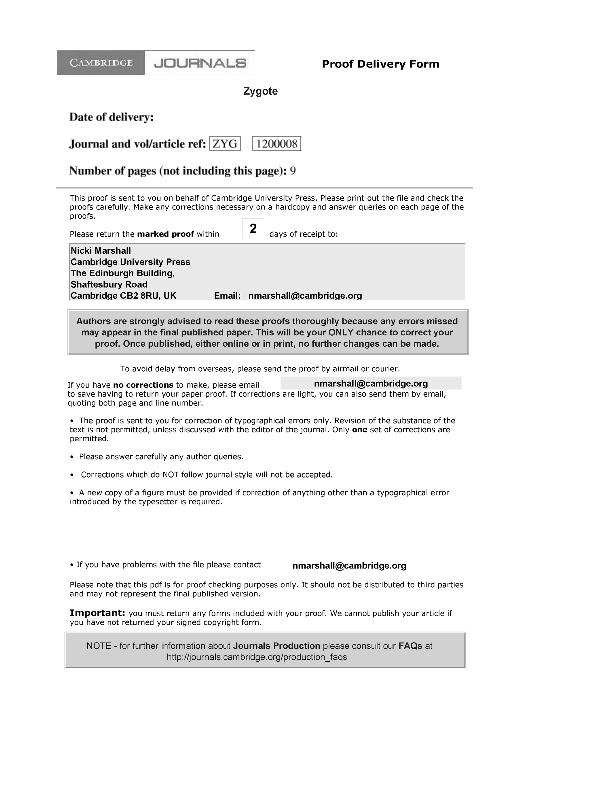Artículo
Oocyte genome cloning used in biparental bovine embryo reconstruction
Fecha de publicación:
02/2013
Editorial:
Cambridge University Press
Revista:
Zygote
ISSN:
0967-1994
e-ISSN:
1469-8730
Idioma:
Inglés
Tipo de recurso:
Artículo publicado
Clasificación temática:
Resumen
Oocyte genome cloning is a method by which haploid maternal embryos are obtained in such a way that parthenogenetic haploid blastomeres from these embryos can be considered as a clone of the original gamete. Our objective was to generate oocyte genome replicates and use them to reconstruct biparental embryos by fusion with haploid male hemizygotes. Furthermore, we generated biparental homogeneous transgene-expressing embryos using parthenogenetic haploid blastomeres that expressed a transgene (EGFP). In the first experiment, parthenogenetic haploid embryos were generated by incubation of oocytes in ionomycin and 6-dimethylaminopurine (DMAP) with a 3 h interval to permit their second polar body extrusion. The cleavage rate was 87.3%. To generate transgene-expressing blastomeres, activated oocytes were injected with pCX–EGFP–liposome complexes 3 h post ionomycin exposure, resulting in a cleavage rate of 84.4%. In the second experiment, haploid parthenogenetic blastomeres that were positive or negative for EGFP expression were used to reconstruct biparental embryos. Cleavage and blastocyst rates for the reconstructed embryos were 78.4% and 61.1% and 10.8% and 8.4%, using EGFP-positive or -negative blastomeres, respectively (P < 0.05). All of the reconstructed embryos showed EGFP expression, with 96.6% of them showing homogenic expression. Oct-4 expression in the reconstructed blastocysts displayed a similar pattern as IVF-blastocyst controls. In conclusion, our results proved that it is possible to use oocyte genome replicates to reconstruct biparental bovine embryos and that this technique is efficient to generate homogeneous transgene-expressing embryos.
Palabras clave:
Gamete Cloning
,
Oocyte
,
Transgenic
,
Bovine
Archivos asociados
Licencia
Identificadores
Colecciones
Articulos(OCA PQUE. CENTENARIO)
Articulos de OFICINA DE COORDINACION ADMINISTRATIVA PQUE. CENTENARIO
Articulos de OFICINA DE COORDINACION ADMINISTRATIVA PQUE. CENTENARIO
Citación
Vichera, Gabriel Damian; Olivera, Ramiro; Salamone, Daniel Felipe; Oocyte genome cloning used in biparental bovine embryo reconstruction; Cambridge University Press; Zygote; 21; 1; 2-2013; 21-29
Compartir
Altmétricas




